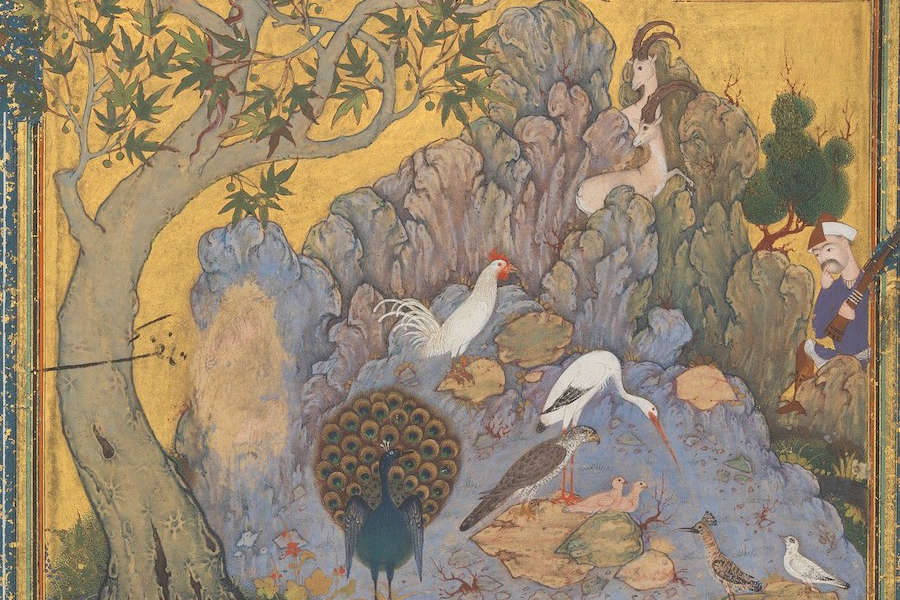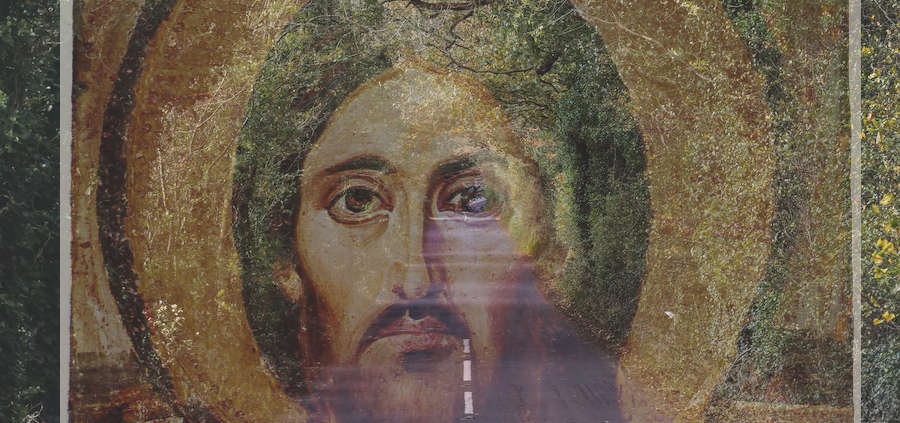The Mystical Camino by O’Neill D’Cruz
Caminante, no hay camino
– Antonio Machado
“Wayfarer, there is no Way” is the bold beginning of Antonio Machado’s poem, followed by the invitation to walk the Way during one’s life: “We make the Way by walking.” This approach applies to all fellow pilgrims on the “Mystical Camino,” the Way.
In our reflection on “The Mystical Canticle,” we realized how the prayer that Jesus taught us is a map of the spiritual journey. However, the map is neither the path nor the journey, so Jesus provides us a tripartite teaching to “make the Way by walking” via “the Way, the Truth, and the Life” (John 14:6). This sets up a comparison of Way as Camino/path, Truth as Canticle/map, and Life as Community/journey.
Every faith tradition offers models and metaphors for the Way, rooted in both mystical and cultural contexts and expressed in archetypal and physical symbols. As we walk the Way, we can compare parallels between faith traditions as “languages of the Spirit.” (Note to spiritual linguists: if one is monolingual, it helps to be aware of the contexts of metaphors; if one is a polyglot, one must take care not to mix the texts of metaphors.) When we end our reflection, hopefully we will see why, in the words of Meister Eckhart, “mystics of the world speak the same language.”
Jesus compared the kingdom of heaven to “a pearl of great value” (Matt 13:46), and “seed [that] . . . becomes a tree for the birds of the sky” (Matt 13:32). These three symbols of the Way—jewel, tree, birds—are common across classics of mystical literature. If the pearl is a water symbol and the tree an earth symbol, birds represent both wind and sky symbols for the kingdom of heaven. Let us review some other examples from various faith traditions.
In The Interior Castle, Teresa of Avila compares the human soul to a diamond as well as a pearl of the East. In mystical Islam, the “pearl” lies hidden in the depths of one’s soul, and finding it requires deep-diving into the ocean of love. Zohar (“splendor” or “radiance”) in mystical Judaism and Chuda-Mani (crown jewel) in Hinduism are other references to the jewel symbolism of the Way. Mystics of all faith traditions emphasize that if one is seeking “a pearl of great value,” walking the Way requires detachment from both material and spiritual possessions and exceptionalism in complete kenosis: sell[ing] all [one] has” (Matt 13:46), or, in the poetic words of T. S. Eliot, “a condition of simplicity, costing not less than everything.”
Teresa of Avila also uses tree-of-life symbolism for the human soul. Ancient traditions refer to the Tree as both mystical—Kabbalah (Judaism), Ashvattha (Hindu, Katha Upanishad)—and mythical—Yggdrasil (Norse), Kalpa-Vruksha (Hinduism)—expressions of the Way. Jesus uses the vine-and-branches analogy for interdependent human relationships that remain “rooted” in the Divine. In Hebrew prophetic tradition, one of the signs of an enlightened coexistence is to “sit under one’s own vine and fig tree, without fear” (Micah 4:4). It should come as no surprise that Prince Gautam became the Buddha (bodh/budh, “enlightened” or “awakened” in Sanskrit/Pali) under the fig tree (bodhi) with the botanical name Ficus religiosa! The mystical tree serves as a symbol for the life-spirit of matter, as it connects life below, on, and above the ground.
Across various faith traditions, birds have long been considered as symbols of divine favor or angelic communication. When Elijah is famished in the Wadi Cherith, ravens bring him his daily bread (1 Kgs 17:6). When Jesus is baptized, a dove appears (Matt 3:16). The swan, a migratory aquatic bird, is a divine symbol in Hinduism and a wisdom symbol in Buddhist traditions. Farid Attar’s Sufi mystical classic, The Conference of the Birds, uses a variety of bird symbols for a description of both pilgrims and the Way. In the Gospels, birds also serve as reminders of Divine care of all creation: “Behold the birds . . . God feeds them” (Matt 6:26) and “not a single sparrow falls to the ground without the Father’s knowledge” (Matt 10:29). Bird symbolism reassures the wayfarer that the Divine is at hand, even when one feels utterly lost amid the tears, trials, and travails encountered while “making the Way by walking.”
Along with symbols, literary styles of mystical literature permit and limit descriptions of the Way. Teresa of Avila writes from her personal experience as a nun, and is perfectly comfortable accepting the limitations of her mystical prose. She insists, “I am writing only to my sisters” and is the first to admit that others may led a different way. Buddhist koans are a unique literary form of using words to demonstrate the limitations of language, while stories and parables provide insights and pointers. Poetry is perhaps the most favored medium of mystics of all faith traditions. Examples include The Dark Night of the Soul, the Song of Songs, The Conference of the Birds, the Bhagavad Gita, and the Mathnawi. These classics span the heights and horizons, depths and dimensions of mystical experiences and expressions. We are thus blessed with a wonderful variety and multiplicity of travel guides, each providing different routes and vistas of the Way.

Detail of cover from a manuscript of Mantiq al-Tayr (Conference of the Birds) by Farid Attar, painting by Habiballah of Sava, c. 1600
Models and metaphors are another form of framing patterns of the Way. Teresa’s 16th-century model of the Way is an “Interior Castle” with seven mansions describing seven phases of the soul’s interior journey. Teresa’s model reflects earlier descriptions of seven concentric castles in the 9th-century Sufi treatise Stations of the Heart (Maqamat al-qulub) and seven palaces of paradise in the 13th-century Jewish mystical classic, the Zohar.
John of the Cross describes seven stages of love using a mountain model in The Ascent of Mount Carmel. Sufi tradition refers to seven valleys traversed along the Way. In the Hindu tradition, the seven wheels (chakras) of the human body represent channels of the life-force (prana in Sanskrit); spiritual practices (yoga) including knowledge (jnana), devotion (bhakti), and selfless service (karma) are ways of channeling the life-force, while seeking union with the Divine (moksha) is the ultimate goal of the faith journey. The correspondence between seven soul modes and seven physical nodes that regulate neural pathways raises interesting parallels for further interfaith and interdisciplinary reflection on “channels of peace.”
We often overlook a paradoxical aspect of the Way—i.e., that there is “no way”—amid all this language of journeys and destinations. In the Hebrew Bible, “the Word is not distant . . . not in the sky . . . not beyond the sea . . . but very near, in your mouth and heart, that you may do it” (Deut 30:11-14). As a corollary, Paul asks in First Corinthians 3:16: “Do you not know that you are God’s temple, and that the Spirit of God dwells in you?” And Rumi echoes Paul: “I started looking for you, not knowing how blind that was. Lovers don’t finally meet somewhere, they are in each other all along.” When yearning for our innermost Divine essence guides us on the Way, we “make the Way by walking.” As the Brhad-aranyaka Upanishad states:
You are your deepest yearning,
As is your yearning, so is your will
As is your will, so are your deeds
As are your deeds, so is your destiny
While stories, symbols, models, and metaphors describe the Way, they are only a means to convey what is beyond words. They are intended to be transparent to, not a substitute for, the Divine. A Buddhist image indicates the difference between means and ends: when the teacher points a finger at the sky, the devoted disciple gazes intently at the finger. Gospel parables about heaven typically begin with “the kingdom of heaven may be likened to . . .” and end with a call to action that reveals the kingdom to and among us, where the Divine “will [is] done, on earth as in heaven” (Matt 6:10).
In order to emphasize that the Truth is real-ized by walking the Way during one’s life, Jesus models ortho-praxy in his life, and invites us to do so in ours: “If anyone wishes to follow me, let them deny themselves, pick up their cross daily, and follow me” (Luke 9:23). We who accept this invitation are called to redeem our crosses as a form of spiritual exercise, love dearly and daily, and discover that when we emulate the Divine, in the words of Catherine of Siena, “all the way to heaven is heaven!”
We realize that ever since God’s first Word—“Let there be Light” in Genesis 1:3—the Divine Light that dawns on and in us has been catholic all along, shining in the souls of “every nation, race, people and language” (Rev 7:9). On the Way, mystics mix the source, course, and force (a trinitarian expression for the Divine) of life-giving love with the light of awareness, the salt of altruism, and the leaven of compassion to become the daily bread of life. We lose the desire to venerate the ingredients, compare the process, and no longer compete to eat. We neither condemn nor judge recipes for bread as offered by various faith traditions. Rather, we gather around the table filled with food (Al-Maidah, Quran) to offer thanks (b’rakhah, Hebrew) for the bread of our life. When we joyfully share the bread-body of selfless service with gratitude—“Take and eat, this is my body” (Matt 26:26), “for the Son of Man did not come to be served, but to serve” (Matt 20:28)—this mystical communion of the Beloved Community eternally commemorates Love, “as it was in the beginning, is now and ever shall be, world without end.”
Amen, Amin, may it be so, Tathastu! May the Way lead us to the Light that shines through us, with us, and in us all! ♦
O’Neill D’Cruz retired once from academic clinical practice as a pediatrician and neurologist, a second time from the neuro-therapeutics industry, and now spends his time caring, coaching, and consulting from his home in North Carolina, known locally as the “Southern Part of Heaven.” He is a wounded healer who works to heal the wounded, in order that All Shall Be Well.





Leave a Reply
Want to join the discussion?Feel free to contribute!